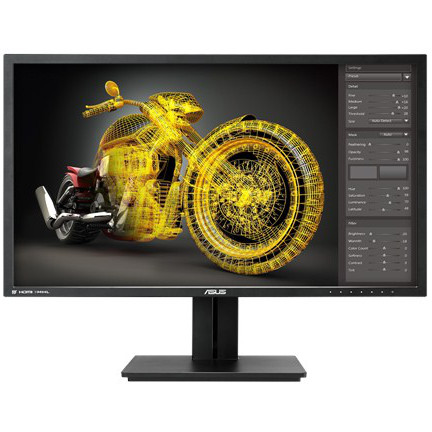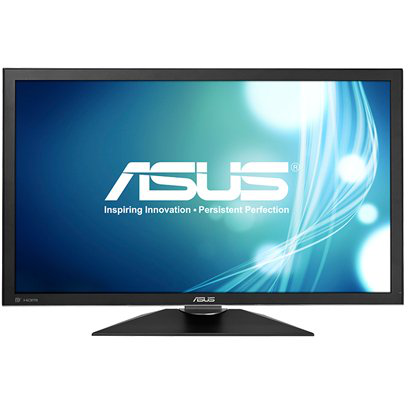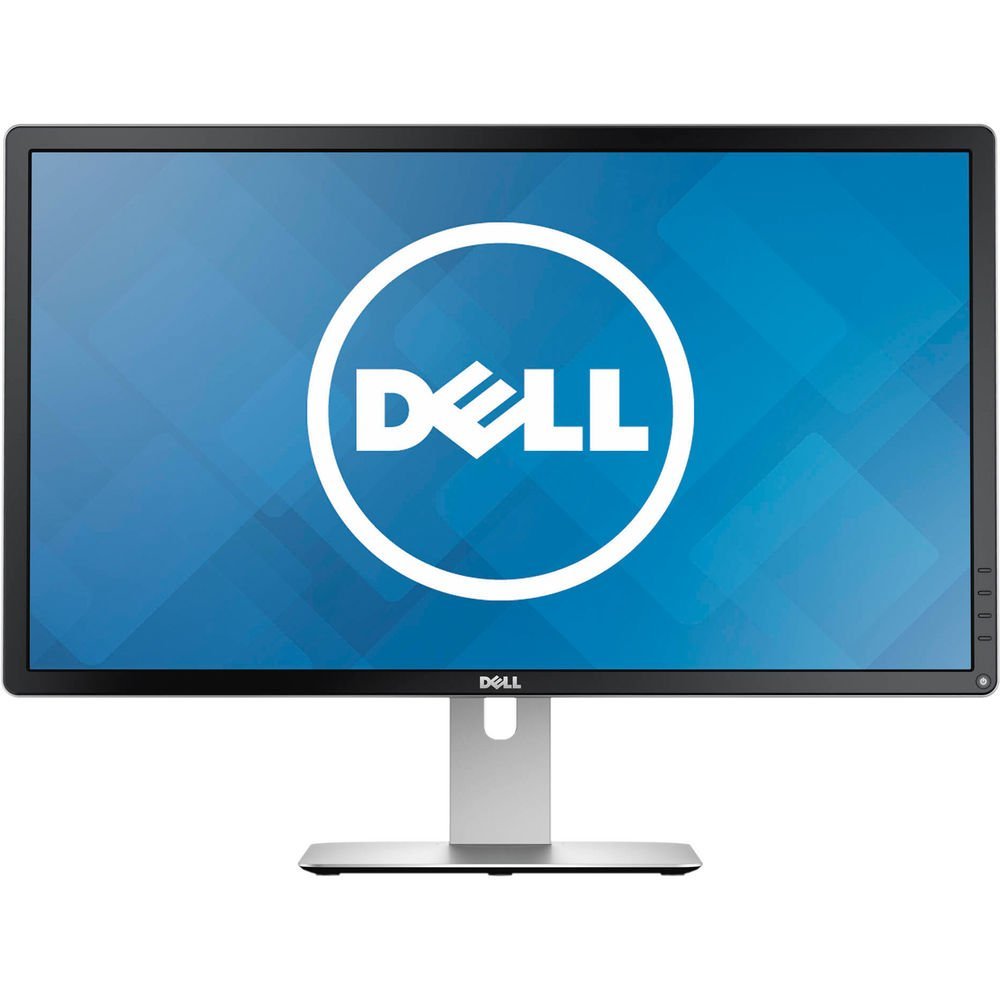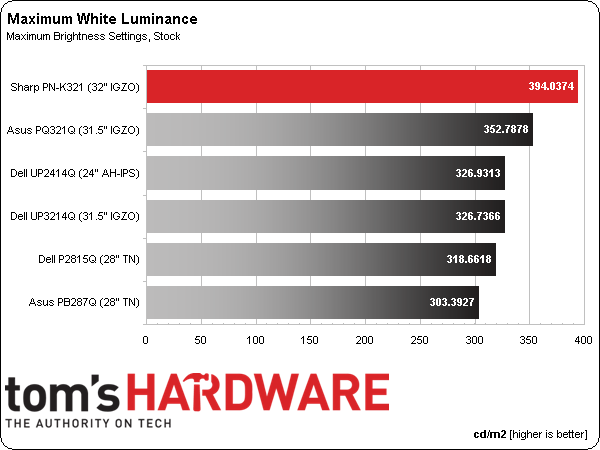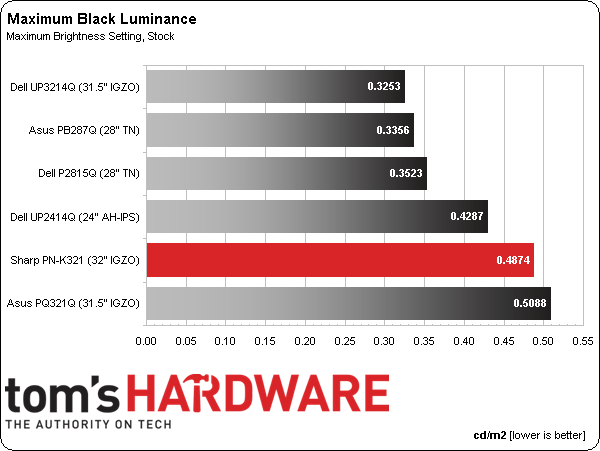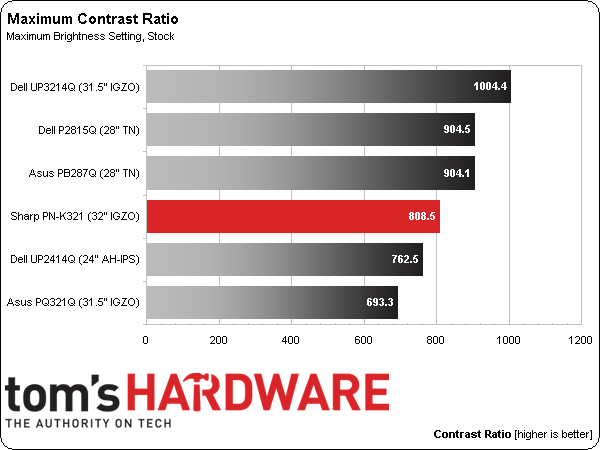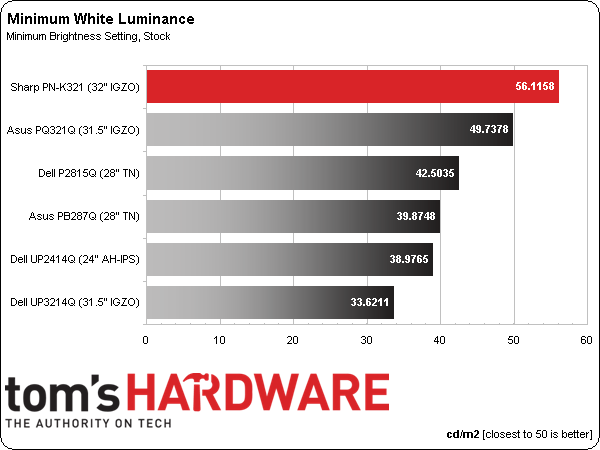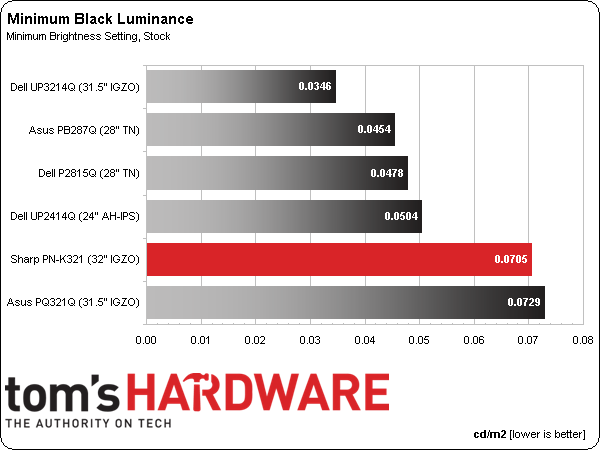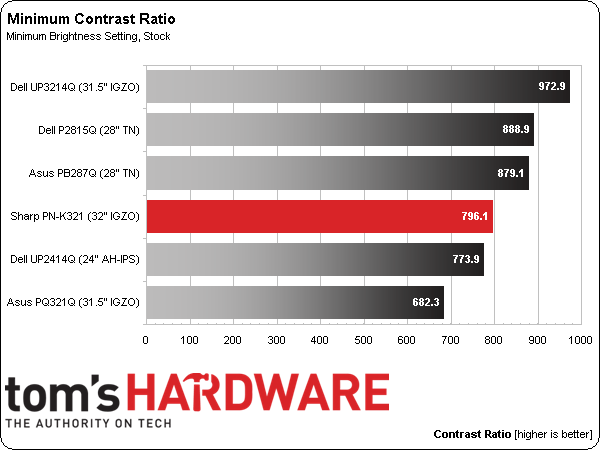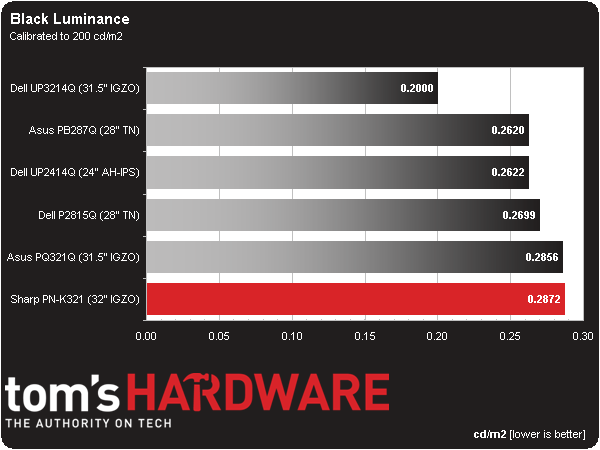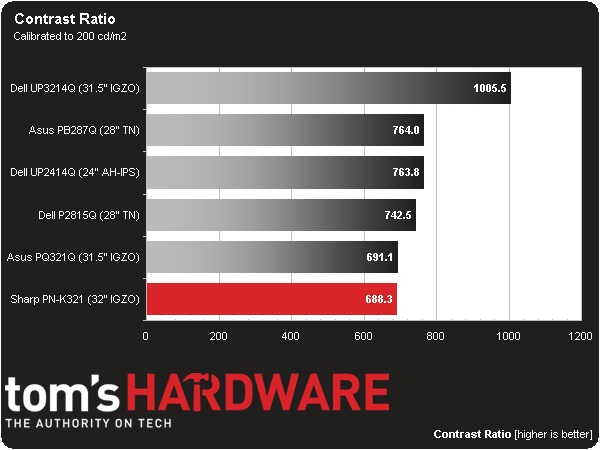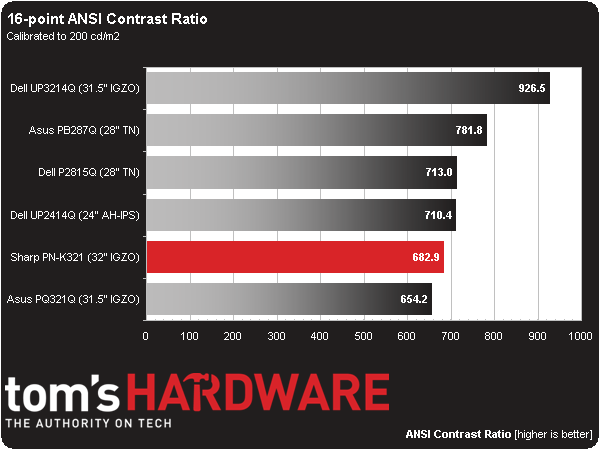Sharp PN-K321 32-Inch Ultra HD Monitor Review: More 4K!
Why you can trust Tom's Hardware
Results: Brightness And Contrast
To read about our monitor tests in-depth, please check out Display Testing Explained: How We Test Monitors and TVs. Brightness and Contrast testing is covered on page two.
Uncalibrated – Maximum Backlight Level
The PN-K321 is the sixth Ultra HD monitor we’ve reviewed, so we have a perfect lineup of 4K-only screens in our comparison group. IGZO is represented by Asus’ PQ321Q and Dell’s UP3214Q. Also from Dell is the UP2414Q, a 24-inch IPS-based display. Finally, we’re including two 28-inch TN monitors: Dell’s P2815Q and Asus’ PB287Q. If you’re shopping for 4K, this should be a great help to your research.
The PN-K321 is the brightest 4K screen we’ve measured so far. It’s rated at 350cd/m2, but easily exceeds that figure. With so much screen area, it'll light up your office, even at half-brightness. There’s plenty of output available for use outdoors, on location.
With the backlight set to its maximum, the black level is a bit higher than most of the competition. It is lower than Asus' screen though, which uses the exact same panel part.
At 808.5 to 1, the PN-K321’s contrast is a little disappointing. We’d like to see at least 1000 to 1, and we know it’s possible since Dell's offering records a 1004.4 to 1 result.
Uncalibrated – Minimum Backlight Level
At the minimum setting, Sharp's PN-K321 settles at a near-perfect 56.1158cd/m2. It yields a perfectly usable image if your office is dark and the contrast level only drops by a hair.
The minimum black level is still a bit high among our group, but not relative to the white level. A result of .0705cd/m2 is pretty dark. At this setting, you need to turn the lights out to see full shadow detail.
Get Tom's Hardware's best news and in-depth reviews, straight to your inbox.
The minimum contrast ratio is pretty close to the maximum one, indicating consistent performance. We’d like to see a higher number across the board, but we believe the majority of users will be satisfied with Sharp’s image quality.
After Calibration to 200cd/m2
The calibrated black level is still at the back of the pack, right behind the PQ321Q. Dialing in the grayscale, something we feel the PN-K321 requires, will harm this result just a bit.
After grayscale calibration, contrast diminishes by almost 15 percent partially because the RGB sliders start at their maximum settings (at least for the high range). In general, however, this particular panel doesn’t match the contrast performance of its competitors; most notably the wide-gamut part used in Dell's UP3214Q. If Sharp is to maintain its higher price point, the company might consider using that screen in its next-gen product while keeping the cost similar or lower.
ANSI Contrast Ratio
ANSI results are at least consistent, if not surprising at only .08 percent below the on/off figure. There’s no question that the PN-K321 sports high build quality and solid performance.
Current page: Results: Brightness And Contrast
Prev Page OSD Setup And Calibration Of The Sharp PN-K321 Next Page Results: Grayscale Tracking And Gamma Response
Christian Eberle is a Contributing Editor for Tom's Hardware US. He's a veteran reviewer of A/V equipment, specializing in monitors. Christian began his obsession with tech when he built his first PC in 1991, a 286 running DOS 3.0 at a blazing 12MHz. In 2006, he undertook training from the Imaging Science Foundation in video calibration and testing and thus started a passion for precise imaging that persists to this day. He is also a professional musician with a degree from the New England Conservatory as a classical bassoonist which he used to good effect as a performer with the West Point Army Band from 1987 to 2013. He enjoys watching movies and listening to high-end audio in his custom-built home theater and can be seen riding trails near his home on a race-ready ICE VTX recumbent trike. Christian enjoys the endless summer in Florida where he lives with his wife and Chihuahua and plays with orchestras around the state.
-
10tacle I'd start *thinking* about buying one of these at a $1500 price point, get more serious at a $1200 price point, and pull the trigger at a $1000 price point...AND when it's a 120Hz panel.Reply -
InvalidError Reply
Give it some time. Display manufacturers like gouging fat wallets while they can to recover some of their R&D costs while production volumes are still low and their products are still different enough to justify higher margins over models aiming for the bargain basement.14481231 said:Over $3000
NEXT
Get this BS under $1000 or dont even release it. -
loki1944 Maybe by the time single GPUs can run games at 60fps on 4K prices will be reasonable, because right now holy cow. Sticking with my 1080p and 1440p monitors for now.Reply -
NightshadeRC I got 2 of the Samsung 4k 60hz monitors about 3 months ago and they were only $349 each. Much better than the 1080p for $150-$200 and 1440p was another couple of hundred more (in Australia, tech tends to cost a bit more).Reply
It's won't be long before 4k TN gets more popular -
jfkeenan Cost is one thing, but why aren't they using HDMI 2.0? My GTX 980 is begging for a 4K 60hz monitor.Reply -
rantoc Got an Dell 3214 and the "split screen" (many don't know this fact about the current 4k 1.2 DP driven displays running at 60hz but in order for DP1.2 to show 4k @ 60 hz the screen is virtually split into two screens over the interface and then combined) issue, many have all kind problems with this including only picture on one screen, different resolutions on one half or all kind of wake from sleep issues.Reply
My advice - Wait for DP1.3 that can handle 4k@60hz properly before considering an 4k screen and that is a shame - the resolution and picture clarity on the Dell UP3214Q is an enormous breakthrough - The issues however are so severe i'm not even using it! So much for a 2000$ monitor =/
